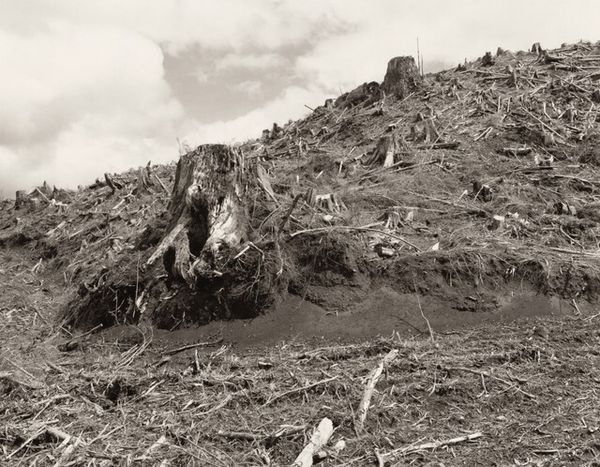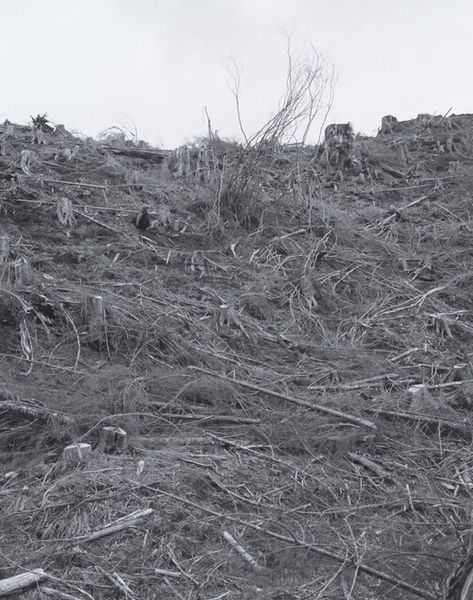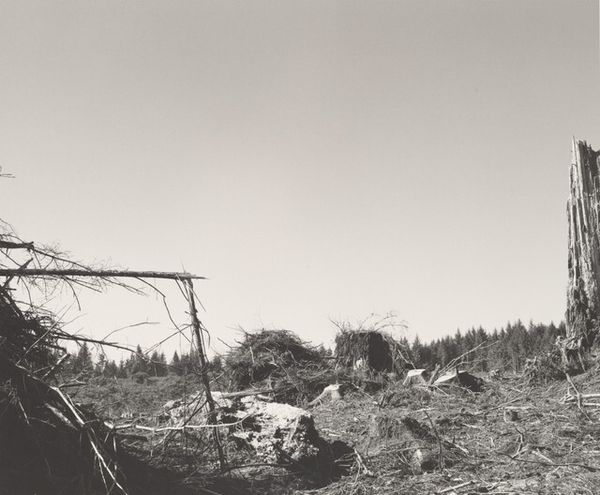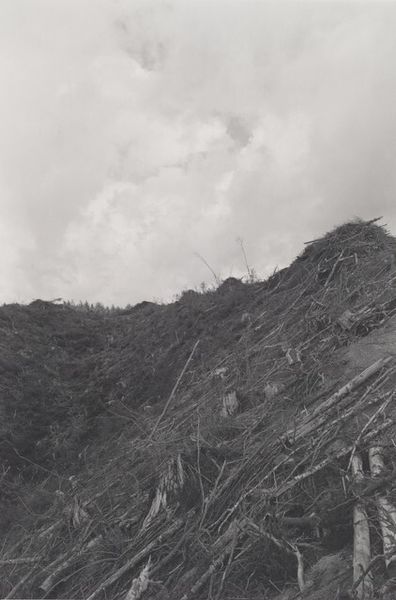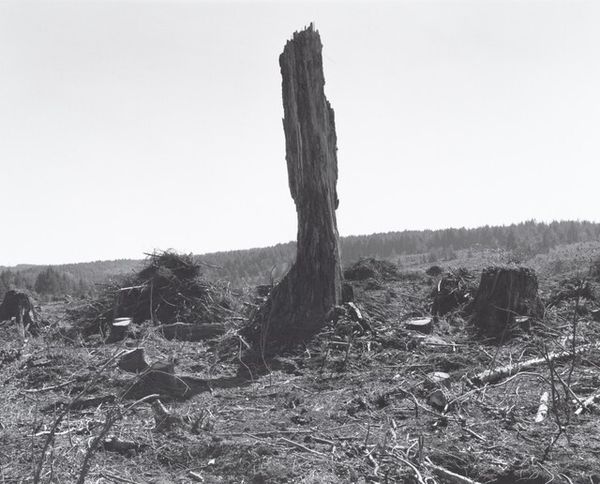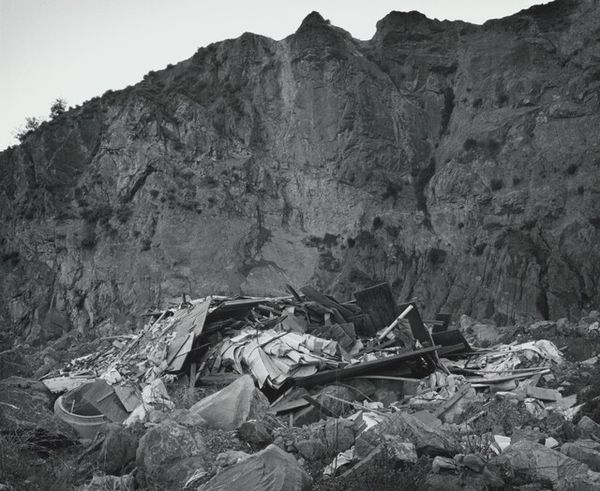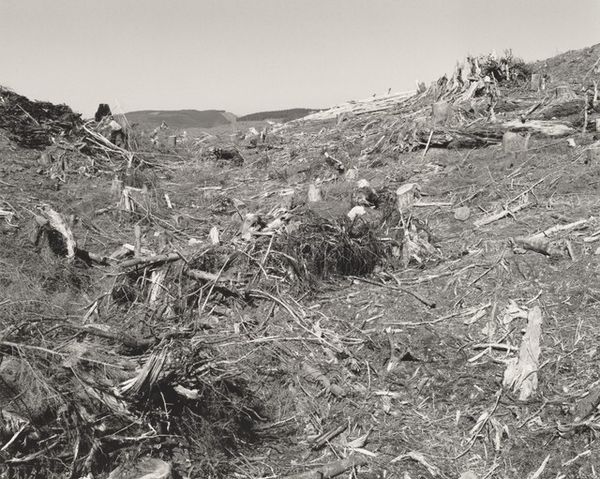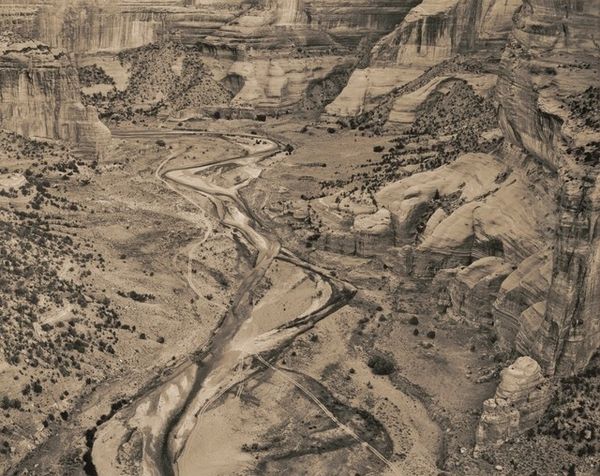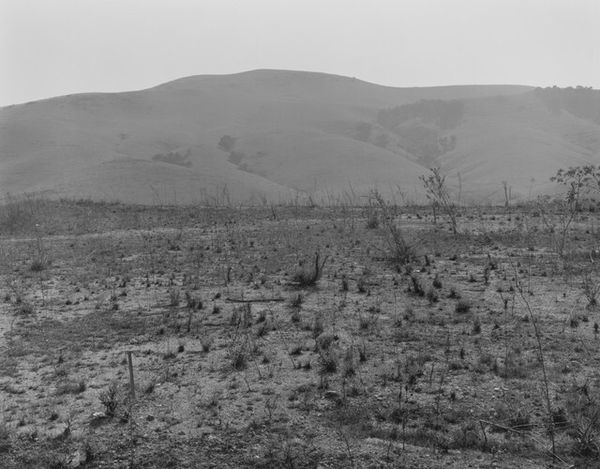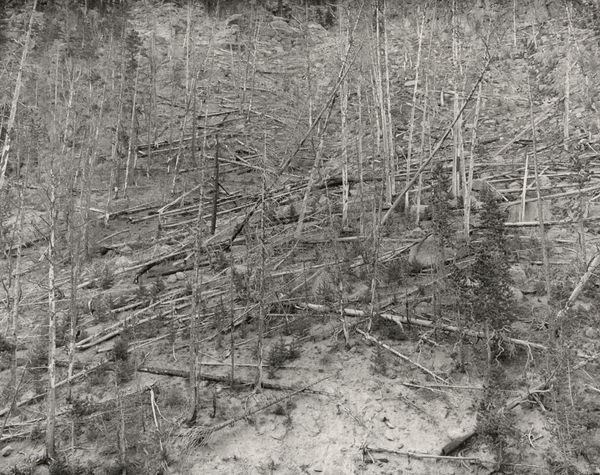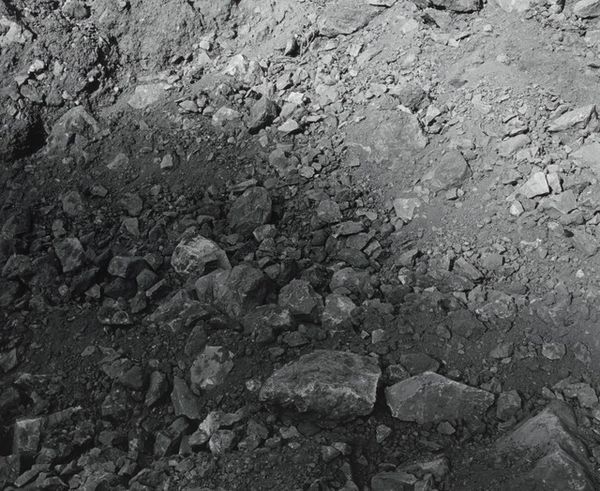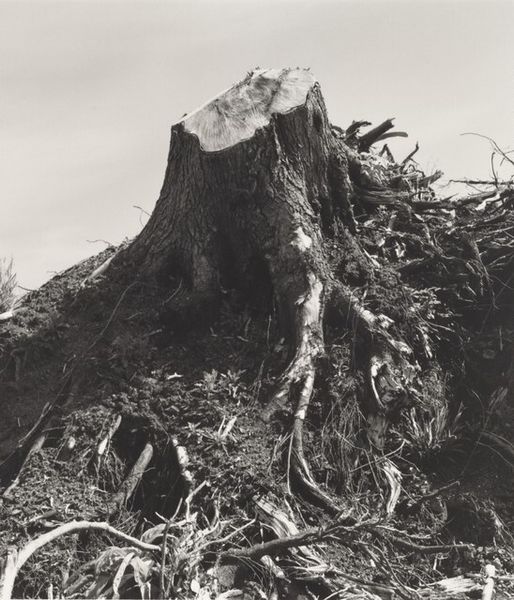
photography
#
black and white photography
#
landscape
#
black and white format
#
photography
#
environmental-art
#
black and white
#
monochrome photography
#
monochrome
#
realism
#
monochrome
Dimensions: image: 22.8 × 28.9 cm (9 × 11 3/8 in.) sheet: 27.64 × 35.4 cm (10 7/8 × 13 15/16 in.)
Copyright: National Gallery of Art: CC0 1.0
Curator: At first glance, it appears to be a barren landscape. Somber and eerily quiet, wouldn’t you say? Editor: Quiet in the way a scream can be quiet. Robert Adams took this photograph, entitled "Clearcut, Clatsop County, Oregon", in 2001. He gives us this denuded hillside laid bare. The black and white format adds to the sense of desolation. Curator: Adams is known for capturing these kinds of stark images that reveal the impact of human activity on the American West. How might his background and influences have shaped his vision? Editor: I think the prevailing question here is what’s missing from the photograph, rather than what is present. And this question is linked to what histories and communities are erased through such actions. His work really emerged alongside the rise of environmentalism. He saw how postwar development was dramatically reshaping the natural landscape, and he began to document these changes, particularly the effects of clear-cut logging. It challenges our traditional notion of the sublime, you know, where nature is supposed to inspire feelings of awe and reverence. Instead, we’re faced with a scene of destruction, a visual representation of ecological damage. Curator: Precisely, and he accomplishes this through the use of stark realism and a keen eye for composition. There is something fundamentally political about landscape photography, especially considering how the genre has historically been used to promote ideas of the frontier. He presents a more critical perspective. Editor: Adams isn't just showing us a ravaged landscape. He's implicating us. We are all connected to these landscapes through consumption and production practices. These are the politics of extraction being laid bare, quite literally, right before our eyes. We should use images like these to ignite critical conversations about power, responsibility, and how we imagine the future of our environment. Curator: It invites an important moment of reflection and challenges the narratives we construct around our relationship to the natural world. Editor: Agreed. Ultimately, the photograph serves as a powerful call to action, urging us to think critically.
Comments
No comments
Be the first to comment and join the conversation on the ultimate creative platform.
